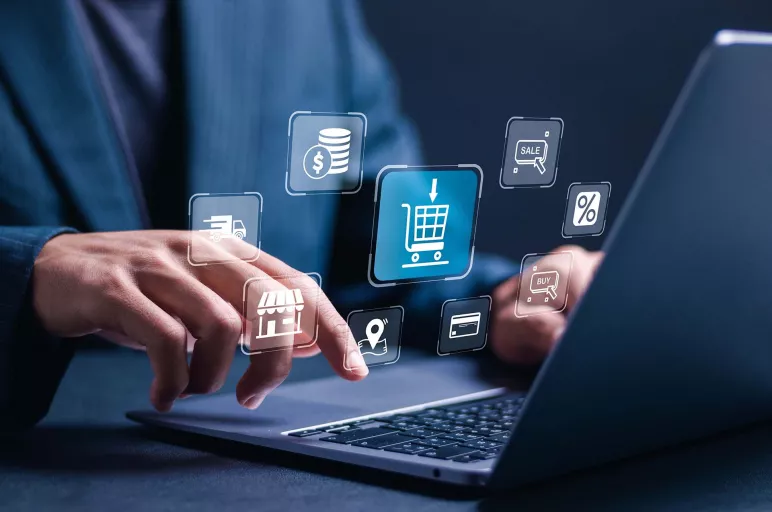
From Sourcing to Payment: How Technology Can Streamline End-to-End Procurement
- Fragmented processes in procurement create functional silos and hamper operational efficiency.
- End-to-end procurement streamlines the entire buying cycle, ensuring seamless coordination and integration.
- Technology enables end-to-end procurement through automation, integration, mobile applications, analytics and centralized platforms.
May 13, 2024 | Procurement Strategy
Amid the prevailing uncertainty in the business environment, organizations are looking to derisk their procurement and supply chain operations as part of a wider strategy to build resilience. Procurement, traditionally seen as a cost center, can be a huge area for strategic optimization.
The entire procurement process is often fragmented in many businesses. Lack of transparency and communication between internal teams as well as external stakeholders exposes gaps and hampers operational efficiency.
How can businesses streamline the function that has become increasingly vital to supply continuity and operations?
They need to unify the end-to-end process.
A comprehensive approach that transcends mere cost reduction efforts, end-to-end procurement looks at the entire buying cycle, from need identification to final delivery, ensuring seamless coordination and integration at every stage.
What is End-to-End Procurement?
The end-to-end procurement process starts with requirement identification and goes all the way to the final delivery of goods and services followed by invoice processing and payment.
End-to-end procurement integrates all procurement activities and allows for better decision-making and more efficient and effective delivery of goods or services.
Why Your Business Needs End-to-End Procurement
1. Increases Efficiency and Effectiveness:
With a well-managed end-to-end procurement process, businesses can reduce red tape and improve overall business efficiency. Moreover, an end-to-end approach means all stakeholders stay on top of progress through the procurement process . This helps to improve decision-making and accountability.
2. Improves Communication and Cooperation:
A well-managed end-to-end procurement process promotes better communication between buyers and sellers and between departments internally. Improved communication, in turn, enhances collaboration and breaks down functional silos.
3. Reduces Risk:
When you leverage an end-to-end procurement process for contract negotiations and contract management , you reduce the risks of contracting out services or purchasing products from an unfamiliar vendor. Furthermore, by appropriately evaluating your supplier’s performance, you eliminate many potential problems before they even arise.
4. Improves Collaboration:
With end-to-end procurement, all stakeholders know what’s going on at every stage of the buyer’s journey. It’s like having a window into the whole buying process. It ensures that your team and the suppliers have a sense of accountability since everyone has equal access to information from the beginning. This transparency allows people to observe, audit and ensure that everything goes according to plan without any hiccups.
How Tech Can Enable End-to-End Procurement
Advanced source-to-pay procurement software can bring together fragmented processes, right from sourcing and supplier selection to contract management, inventory management and invoice processing and payment. It can automate routine, time-consuming processes and enable the team to contribute in more strategic ways.
1. Automation:
Machine learning (ML) can automate spend analysis, supplier risk analytics, and provide insights into future demand, allowing procurement staff to concentrate on more value-adding activities. ML can also detect patterns and trends in procurement data, enabling the organization to address risks proactively and improve sourcing decisions.
2. Integration with ERP Systems:
Integration with ERP systems allows data sharing between procurement and other business functions such as finance, inventory management and accounting. This means that no silos are formed and data from all departments can be used to enhance procurement decisions.
Also Read: What Intelligent Procurement Can Do for Your Business
3. Mobile Procurement Applications:
With mobile applications, procurement professionals can access procurement systems on the go and perform tasks remotely. They can approve purchase requisitions, check the status of orders, and communicate with suppliers, regardless of their location. This enhances flexibility and responsiveness – reducing delays.
4. Data Analytics and Insights:
Sophisticated analytics tools convert data from the end-to-end procurement lifecycle into actionable insights for smarter decision-making and cost-saving opportunities. Intelligent analysis of past trends can guide decision-making and optimize the procurement lifecycle.
5. Centralized Procurement Platform:
By adopting software on the cloud, an organization can get a single source of truth, which facilitates the performance of all the procurement activities starting from creating the source list, managing vendors, signing contracts, purchasing goods and services and then finally settling invoices. Such software offers modules that facilitate all these activities and allow them to seamlessly inter-work from anywhere at any time, giving a holistic view of the procurement process.
To Sum Up
The advantages of end-to-end procurement are significant: a holistic approach complements and goes beyond cost-reduction initiatives. It adds efficiency and improves communication and collaboration, reduces risk, ensures product quality control and improves transparency across the procurement process.
With AI, ERP integration, mobile procurement apps , data analytics and centralized procurement platforms, advanced procurement technology can oversee end-to-end procurement processes.
Explore GEP’s AI-powered procurement software for end-to-end procurement transformation.



